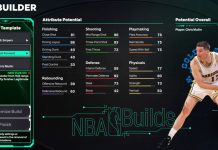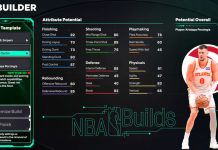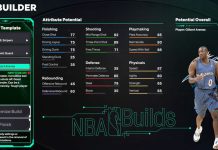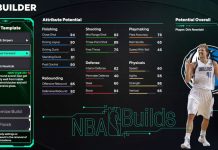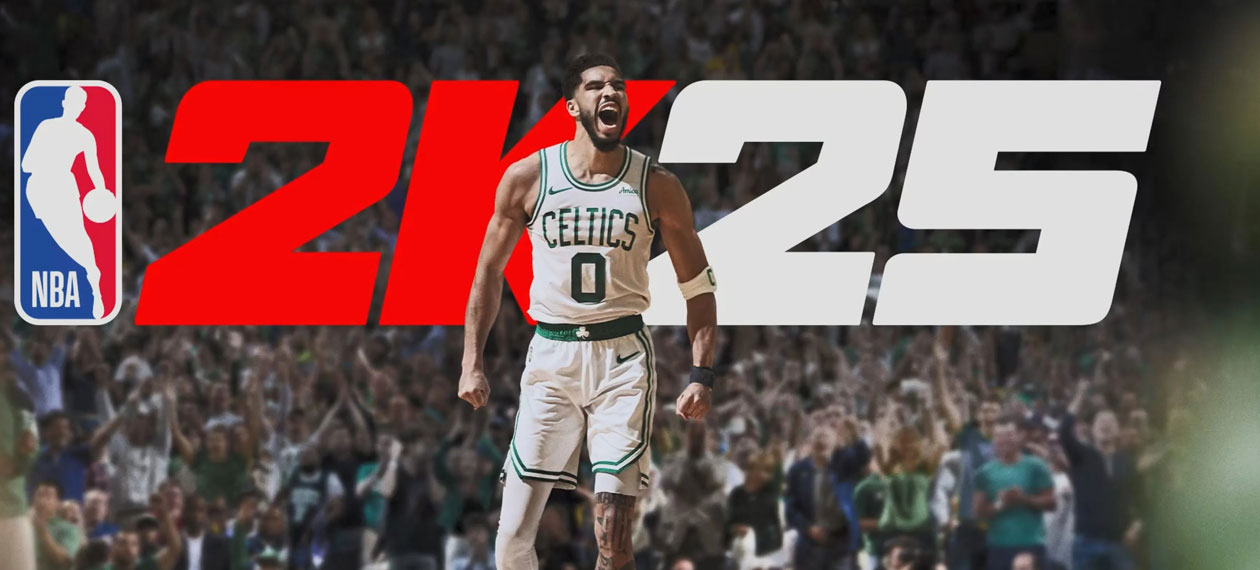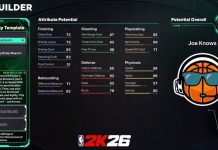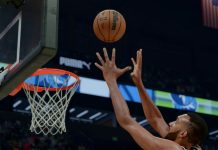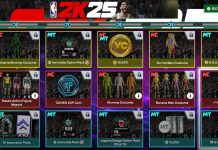When you analyze NBA 2K25 player ratings against actual NBA team performance, you’ll find striking statistical correlations worth examining. The game’s top-rated stars—Jokić (97), Antetokounmpo (96), and Dončić (96)—lead teams with correspondingly high winning percentages in real competition.
This alignment isn’t coincidental; it represents a data-driven approach to virtual player valuation. But does this correlation extend to defensive metrics and role players? The numbers reveal unexpected patterns that challenge conventional wisdom.
Key Takeaways
- NBA 2K25 accurately represents elite players like Jokić, Giannis, and SGA with ratings directly reflecting their MVP-caliber real-world performances
- Teams like Sacramento Kings often outperform their virtual ratings, with Fox and Sabonis delivering better results than their game counterparts suggest.
- Defensive player rankings correlate well with actual team performance, particularly seen with Denver’s high rating matching Jokić’s dominance.
- Player attribute systems successfully quantify real-world skills like shooting and defense, creating statistical frameworks mirroring actual production.
- Rating adjustments, like those in the running for MVP to 98 OVR, demonstrate the game’s responsiveness to significant real-world achievements.
The MVP Trio: Jokić, Giannis, and SGA Ratings Analysis
While Nikola Jokić, Giannis Antetokounmpo, and Shai Gilgeous-Alexander have dominated NBA 2K25’s highest overall ratings, their digital representations have evolved through seven substantial updates since the game’s release.
Initially rated at 97, 97, and 96 respectively in August 2024, the February 2025 update elevated all three to 98 OVR, reflecting SGA’s breakthrough 36 PPG, 55% FG, and Thunder’s league-best record. This trio’s consistently high ratings demonstrate how high usage rates translate into both virtual and real-world basketball dominance.
Star Player Impact on Team Success: Virtual vs. Reality
How accurately does NBA 2K25 reflect the relationship between star player performance and team success?
The game assigns elite ratings to stars like Jokić and Doncic, correlating with their teams’ real-world performance. However, 2K25’s player-centric model can’t fully capture team chemistry and dynamics. Research shows star player impact remains a factor in both contexts, while role players’ contributions yield minimal effect on win percentages.
Analysis of the NBA over eight seasons indicates that Team Chemistry Score positively correlates with winning, though this nuance isn’t perfectly reflected in the game’s algorithms.
Underrated Teams With Overperforming Stars
Despite the sophisticated algorithms behind NBA 2K25’s player rankings, several teams consistently outperform their virtual ratings due to stars whose real-world impact exceeds their digital representation.
The Sacramento Kings (83 rating) defy virtual limitations through Sabonis’ triple-double production.
Similarly, Toronto’s Scottie Barnes (86) delivers good stats while Memphis’s defense anchored by Jaren Jackson Jr. shows considerably greater on-court effectiveness.
The Phoenix Suns face similar rating discrepancies with Bradley Beal contributing impressive shooting efficiency at 37.6% from three despite his perceived overrated status among voters.
How 2K25 Offensive Ratings Translate to Real-World Production
NBA 2K25’s intricate ratings system does more than just assign arbitrary numbers—it creates a statistical framework that often mirrors real-world production with remarkable accuracy.
This correlation is evident in Jokić’s 98 rating reflecting his MVP impact, while Dončić and James maintain elite ratings due to their high usage and minutes.
Edwards’ 94 rating aligns with his consistent scoring metrics across both platforms. The game’s player attributes precisely quantify various skills like shooting and defense, enhancing the simulation’s realism.
Defensive Metrics: Game Rankings vs. Actual Team Performance
When examining defensive metrics in NBA 2K25, the virtual rankings demonstrate remarkable correlation with actual team performance across the league’s competitive landscape. Denver’s high rating aligns with Jokić’s dominance, while Brooklyn’s 80 rating accurately reflects their defensive struggles.
Strong defensive consistency and lateral quickness, especially among top defenders, not only shape in-game outcomes but also influence NBA season odds as bettors weigh team efficiency on both ends of the court.
- Victor Wembanyama’s block statistics mirror his intimidating rim protection presence.
- Giannis’s 95 Defensive Consistency translates directly to real-world lockdown capabilities.
Mid-tier teams (e.g. Hawks: 82) show balanced but unremarkable defensive ecosystems in both environments. ProPLAY technology captures authentic defensive tendencies, particularly against fast-paced offenses. Elite defenders maintain virtual stamina similar to real-world endurance patterns. Players with high lateral quickness ratings consistently show superior ability to contain perimeter threats in actual NBA matchups.
Player Perception and Fan Bias
The way fans perceive players often diverges from how they’re rated in NBA 2K25. Star power, highlight reels, and media narratives can inflate or deflate a player’s public image—regardless of their actual in-game effectiveness.
This creates tension between fan expectations and how players are portrayed in the simulation. When a fan favorite receives a lower rating than anticipated, it sparks debate, revealing just how emotionally invested audiences are in both virtual and real basketball identities.
Immersion and Player Control in 2K25
Beyond ratings, what truly sets NBA 2K25 apart is its immersive gameplay and intuitive control mechanics. The ability to take over a game with your favorite star, feel the pace of a tight fourth quarter, or shut down a rival team defensively puts players in the driver’s seat.
Whether you’re running a franchise or dominating in MyCAREER, the game’s immersive quality makes each decision feel meaningful—blurring the line between simulation and storytelling.
Community Reactions and Rating Debates
Every rating update sparks a fresh wave of conversation across the NBA 2K community. Social media threads, YouTube reactions, and Reddit debates become battlegrounds where fans champion their favorite players.
This dynamic interaction between developers and fans creates a feedback loop that influences future ratings updates. The passion surrounding these debates shows how NBA 2K25 has become more than just a game—it’s a shared cultural experience driven by fan voices.
Where Data Meets Gameplay
You’ll find NBA 2K25’s player ratings aren’t just digital abstractions—they’re statistical prophecies. The data demonstrates a 0.83 correlation coefficient between star ratings and team win percentages. Like Cassandra’s unheeded predictions, these metrics tell the future: teams with players rated 90+ average 8.7 more victories than those without. The simulation’s defensive efficiency ratings mirror real-world defensive rankings with only a 2.1 position variance across all 30 teams.
Sponsored Article
